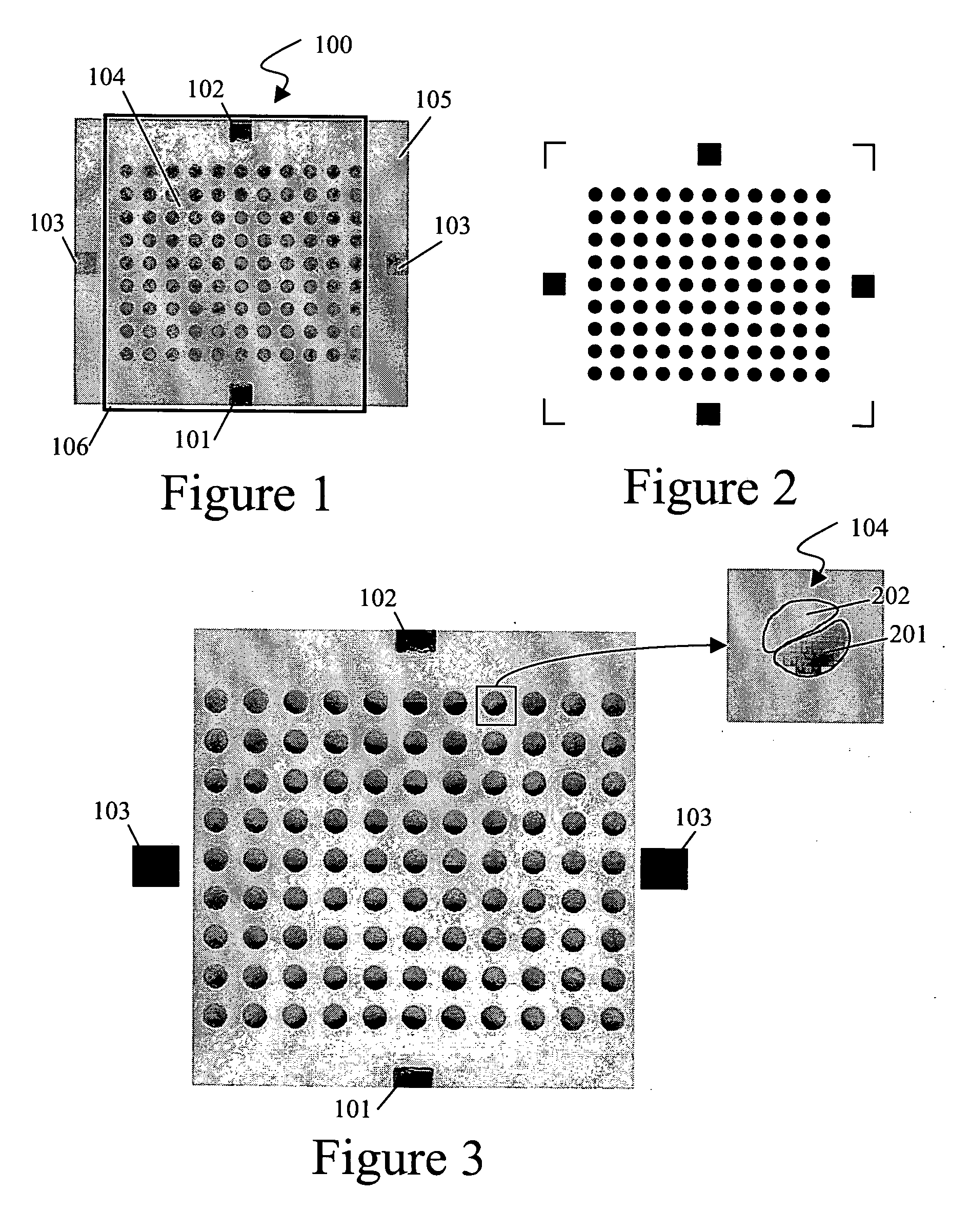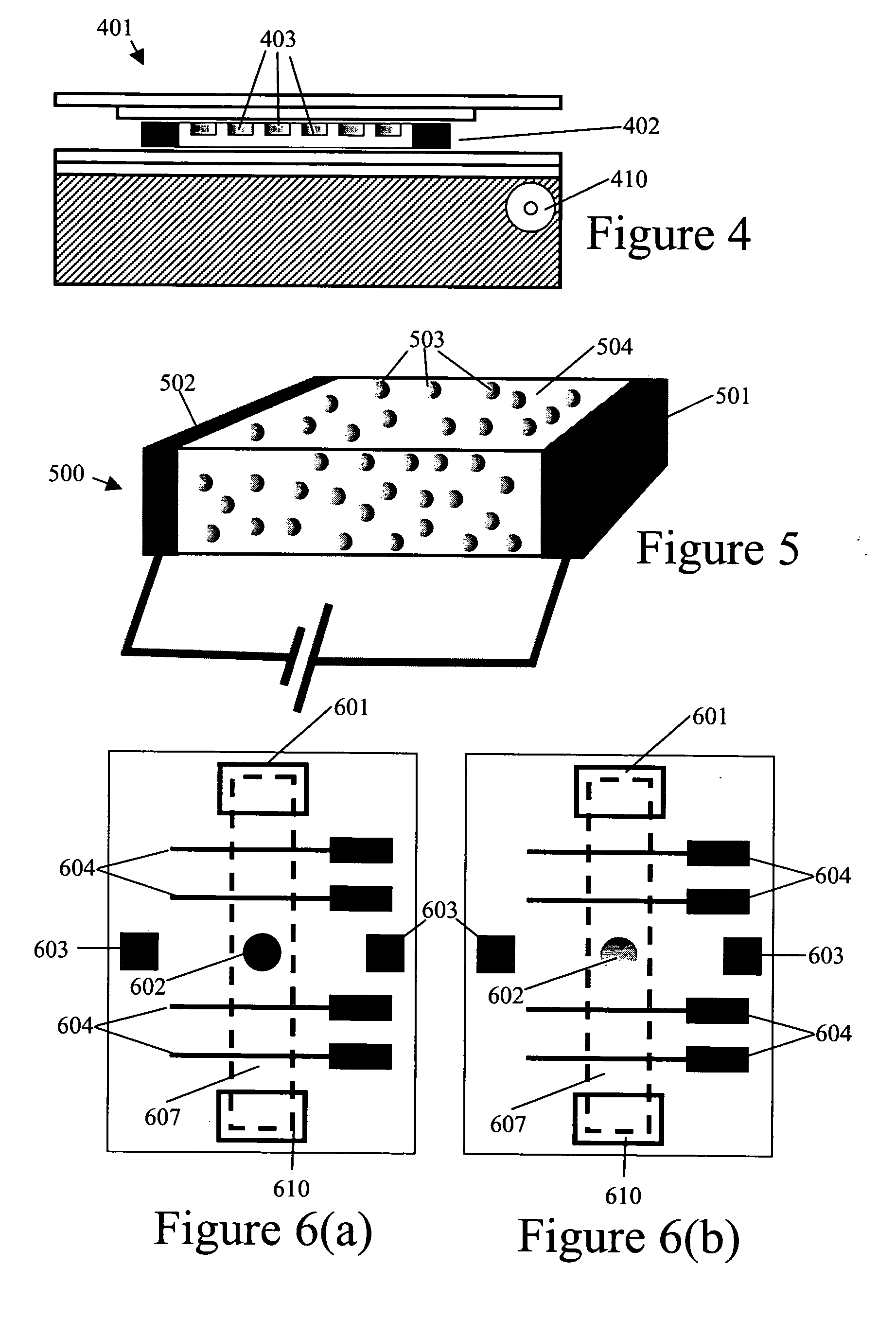E-field mapping
a technology of electric field and electric field, applied in the direction of electrical measurement, measurement devices, instruments, etc., can solve the problems of requiring relatively complicated analysis and measurement equipments, affecting the accuracy of eis, so as to reduce costs and complexity, the effect of simple and low-cos
- Summary
- Abstract
- Description
- Claims
- Application Information
AI Technical Summary
Benefits of technology
Problems solved by technology
Method used
Image
Examples
Embodiment Construction
[0058] In preferred embodiments, the sensor element comprises, as electrochemically active material, an electrochromic polymer which is electrically conducting in at least one oxidation state, and optionally also comprises a polyanion compound such as poly(styrenesulfonate) (PSS). Electrochromic polymers for use in the sensor element are preferably selected from the group consisting of electrochromic polythiophenes, electrochromic polypyrroles, electrochromic polyanilines, electrochromic polyisothianaphthalenes, electrochromic polyphenylene vinylenes and copolymers thereof, such as described by J C Gustafsson et al in Solid State Ionics, 69, 145-152 (1994); Handbook of Oligo- and Polythiophenes, Ch 10.8, Ed D Fichou, Wiley-VCH, Weinhem (1999); by P Schottland et al in Macromolecules, 33, 7051-7061 (2000); Technology Map Conductive Polymers, SRI Consulting (1999); by M Onoda in Journal of the Electrochemical Society, 141, 338-341 (1994); by M Chandrasekar in Conducting Polymers, Fund...
PUM
 Login to View More
Login to View More Abstract
Description
Claims
Application Information
 Login to View More
Login to View More - R&D
- Intellectual Property
- Life Sciences
- Materials
- Tech Scout
- Unparalleled Data Quality
- Higher Quality Content
- 60% Fewer Hallucinations
Browse by: Latest US Patents, China's latest patents, Technical Efficacy Thesaurus, Application Domain, Technology Topic, Popular Technical Reports.
© 2025 PatSnap. All rights reserved.Legal|Privacy policy|Modern Slavery Act Transparency Statement|Sitemap|About US| Contact US: help@patsnap.com



